Sep 18, 2024
A Homeowner’s Essential Fall Maintenance Checklist

Routine upkeep with a fall maintenance checklist will help your home stay in tip-top shape.
Routine fall maintenance tasks act as a preventative measure against more serious home issues later on. Here’s what to focus on when leaves begin to change color and the temperature drops below 70 degrees:
Improve your attic’s insulation
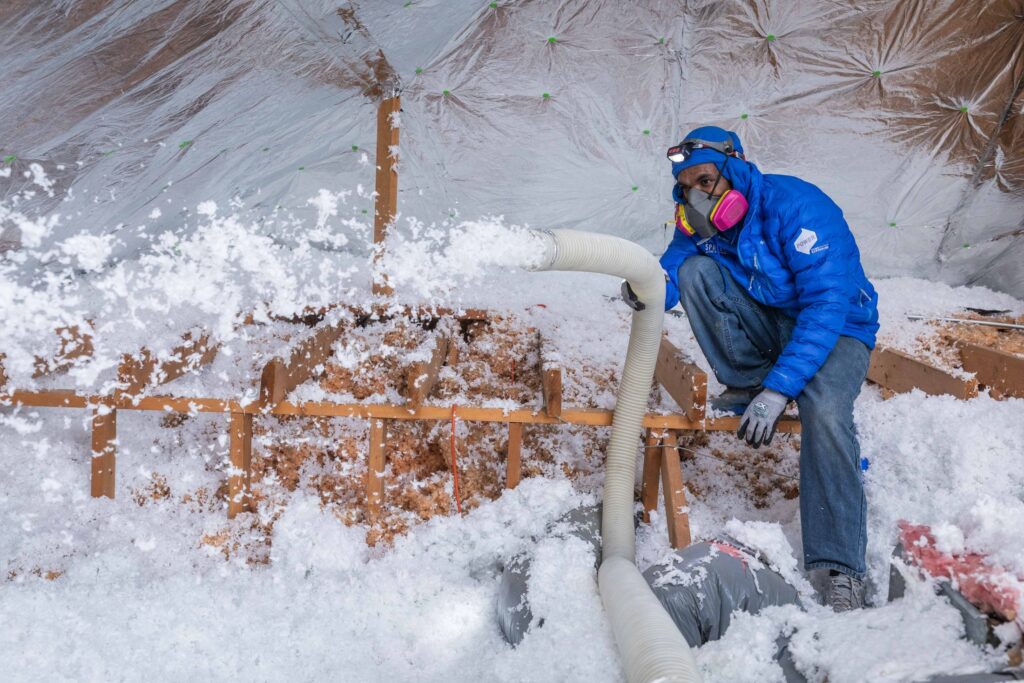
Homeowners typically focus on the outside when the temps drop, but the most effective way to ensure your house is fall-ready is to prepare it from the inside out. Before it gets too cold, ensure you have proper insulation in your attic.
This helps improve the airflow throughout your entire home and helps to prevent warm air from escaping to the outside. When choosing proper insulation, be on the lookout for the “R-value”. The higher the R-value of your insulation, the more energy-efficient it is. The recommended R value for your home varies from region to region. Typically you’ll find R-13 to R-23 for exterior walls, and R-30, R-38 & R-49 for attic and ceiling spaces.
Inspect your roof

Inspect roofing for missing, loose, or damaged shingles and leaks. Fall is an ideal time to repair your roof before winter storms hit. If you’re noticing mold or other growth on your roof, compromised shingles, — or worse, leaks inside your home — it’s a sign it’s time to replace.
Fall maintenance poses an opportune time to replace or add roof accessories. Drip edge, a chimney cricket, or pipe collars help prevent leakage into the home, and around chimneys, pipes, and vents.
Repair siding
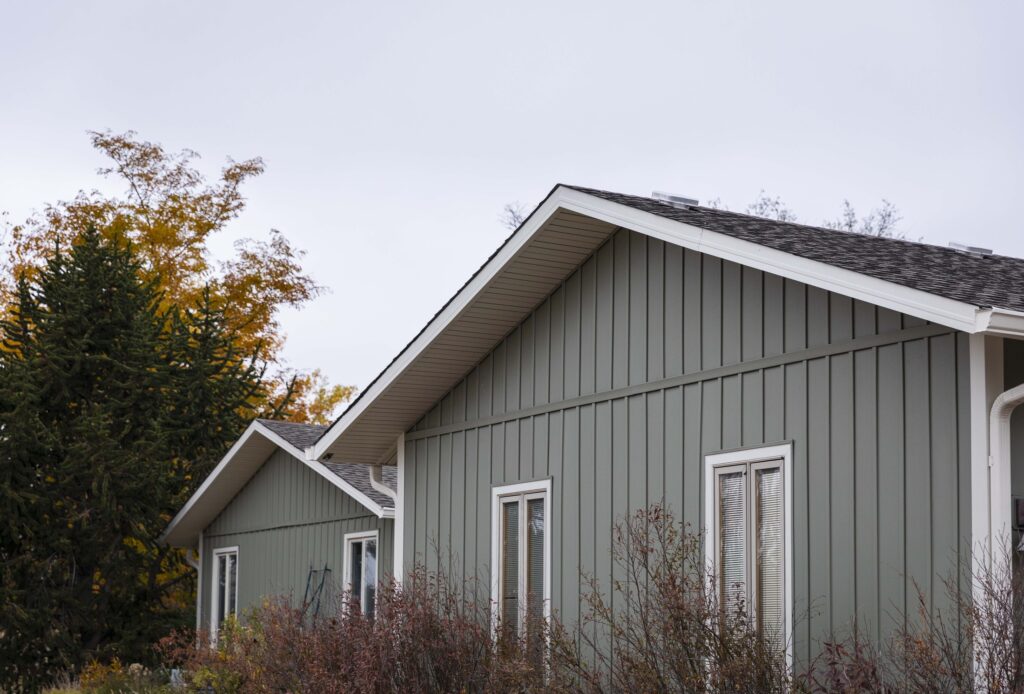
Visually inspect your home from all sides no matter the material — whether that’s stucco, brick, cedar, cement board, or vinyl siding.
Before it gets too cold, repair any areas that are cracked, missing, or loose. Leaving these unaddressed or exposed to moisture or the elements can can lead to mold, mildew, compromised sheathing, and other problems inside your home.
Replace old, drafty windows

Does your home have old wood windows with only one pane of glass? Or are your vinyl windows significantly outdated? Before it gets chilly, take stock of your windows’ current status.
Energy-efficient windows are made from vinyl or synthetic substances and typically include two panes of glass with a Low-E coating, an insulated frame, and Argon Gas. This is designed to keep your air conditioning inside and hot air out.
Seal air gaps

Make sure your windows and doors are sealed and working properly. This adds home value when it comes to lower energy bills. It’s important to prevent any possible leaks which could lead to costly interior damage.
Weatherstrip, or seal, all of your windows and doors to ensure that no heat is escaping out, and no cold air is coming in. (It also helps prevent critters like small insects and animals from crawling into your home.)
For homeowners looking for a DIY fix, running caulk is an affordable $5 fall maintenance project.
Close off outdoor faucets
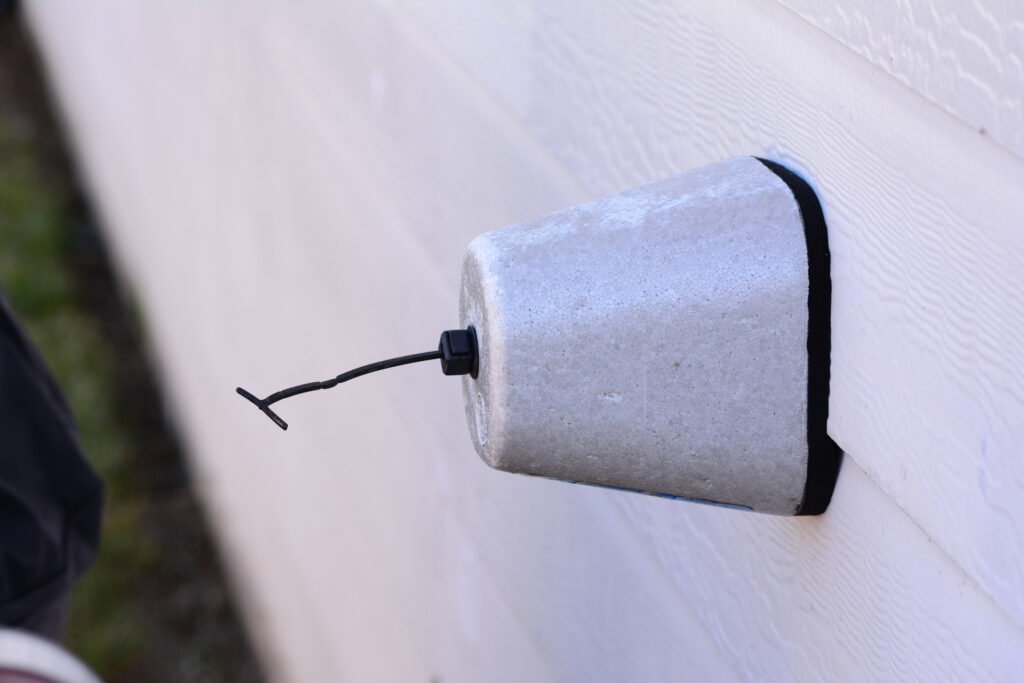
A spigot is an external faucet for connecting a hose outdoors. Often the water line will run through your home’s siding. That spigot is more susceptible to the elements than inside your home. If water remains in the part of the pipe that’s outside and freezes inside the water line, you could very well have a burst pipe on your hands. This could mean water leaking behind your siding, and even inside your home. Make sure you drain the last bit of water out of that spigot without drawing new water from the source. An easy fix to winterize this faucet is to place an outdoor foam faucet cover over the spigot.
Clear your gutters
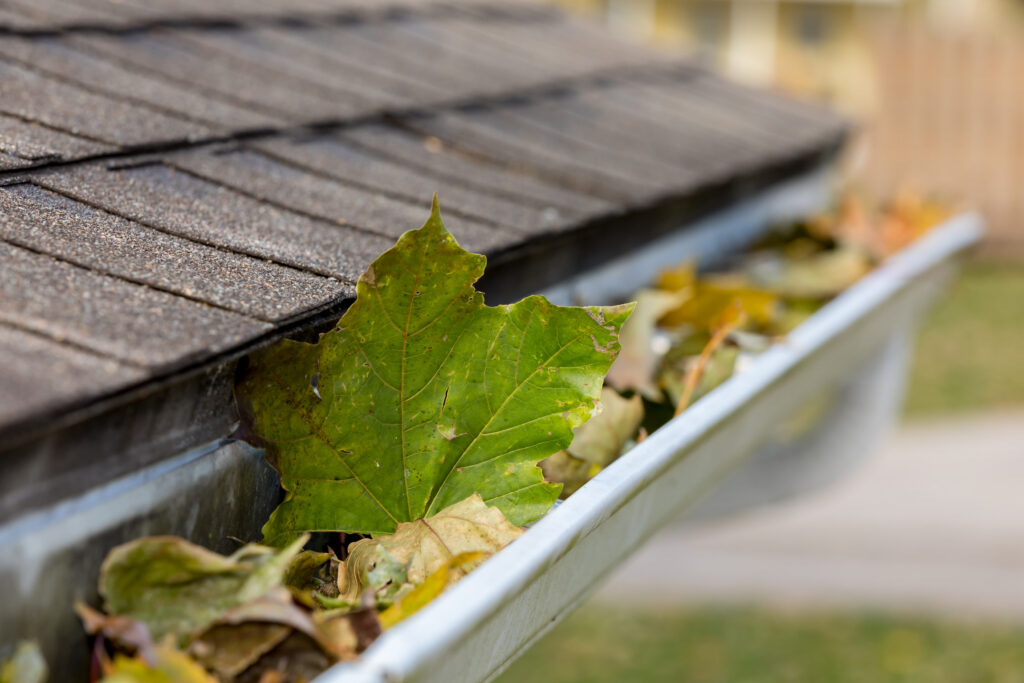
Gutters are important for diverting water away from your home so it doesn’t collect and leak inside. Make sure you clear out leaves, sticks, and other debris, so that you don’t allow any blockages to prevent water from properly escaping. (And this is an important maintenance task even if you use gutter guards.)
Ensure you are following the slope or the pitch of the gutter all the way towards the downspout. If it’s placed too high, water can pool, and if debris is stuck in there, it could start to grow mold over time.
Clean your windows
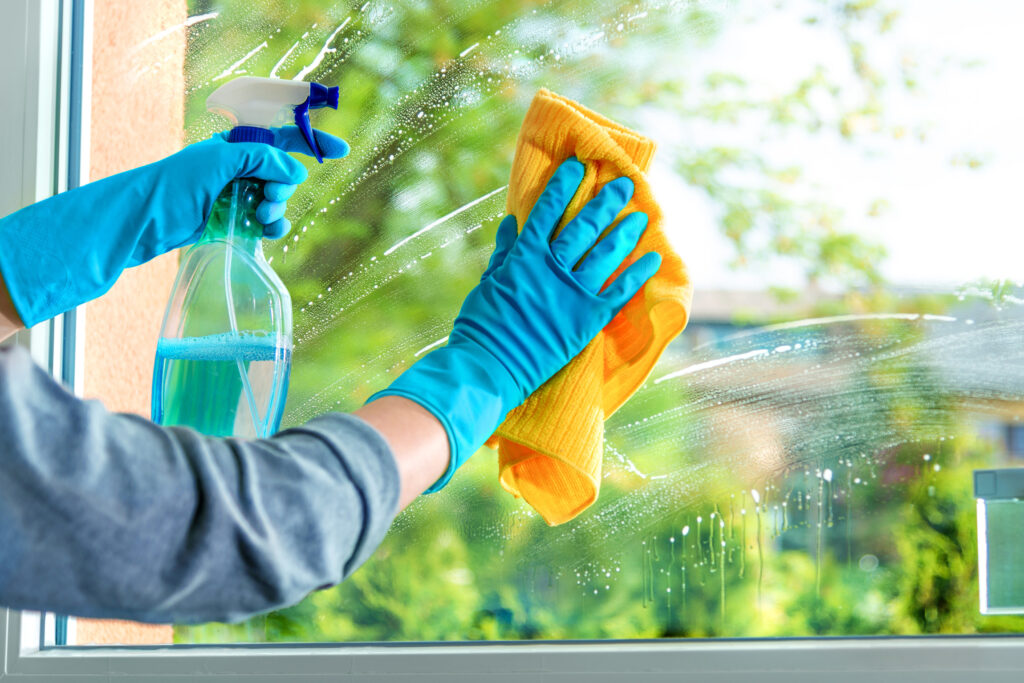
Summer is prime time for pollen, grime, and debris to pile up on the window glass and inside the frame. Cleaning is as easy as using a gentle solution of soapy water and a non abrasive microfiber towel.
How you clean your windows depends on what type you have. Double-hung windows are beneficial because they have a tilt feature that allows you to clean them from inside the house, so you don’t have to worry about climbing a ladder from outside. Casement windows have a similar benefit. The most difficult window to wash is a fixed window, which doesn’t open and requires you to clean it from the outside.
Clean and store window screens
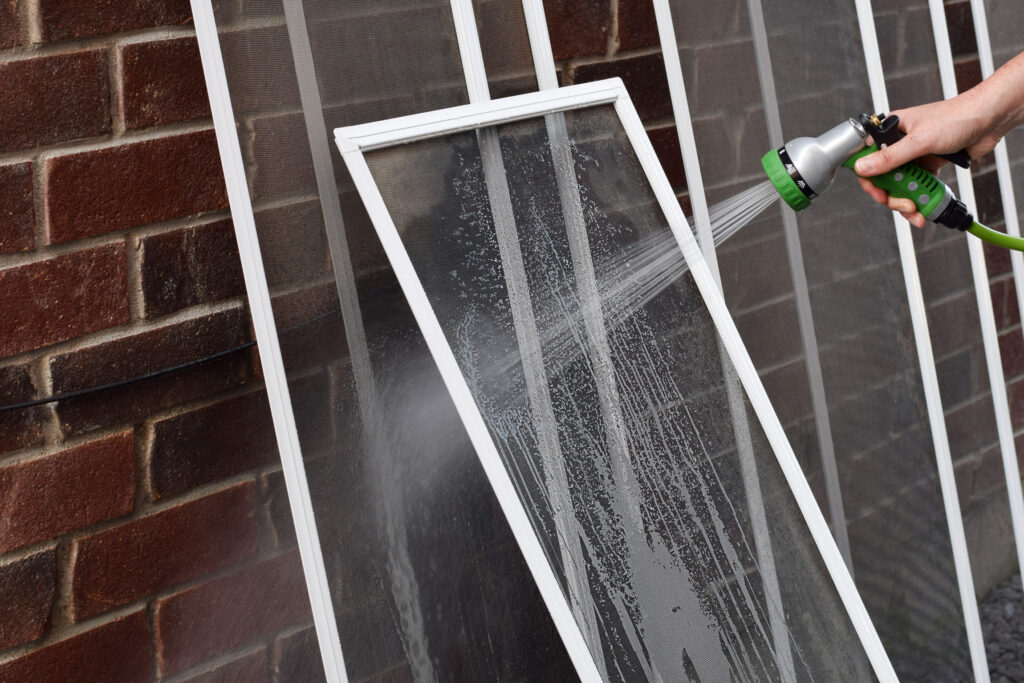
CleanwWindow screens on a regular basis, but be gentle in how you care for them. You should never use a pressure washer on screen. The force may tear the mesh, dislodge the spline (the rubber cord-like material that binds the mesh to the frame), or compromise the integrity of the overall seal.
Instead, keep screens in their frames and simply vacuum them using a fine bristle attachment. Or, if you want to do a deeper clean, the great news is that most exterior screens can be removed safely from the interior of your home — no need for ladders!
Remove the screen, place them on a flat surface, and clean them using a microfiber towel and mild, soapy water. Then you just need to rinse the screens with clean water and wipe dry before reinstalling them.
Right before fall turns to winter, remove screens from their windows and doors. Store them in an upright position until spring.
Change direction of your ceiling fan
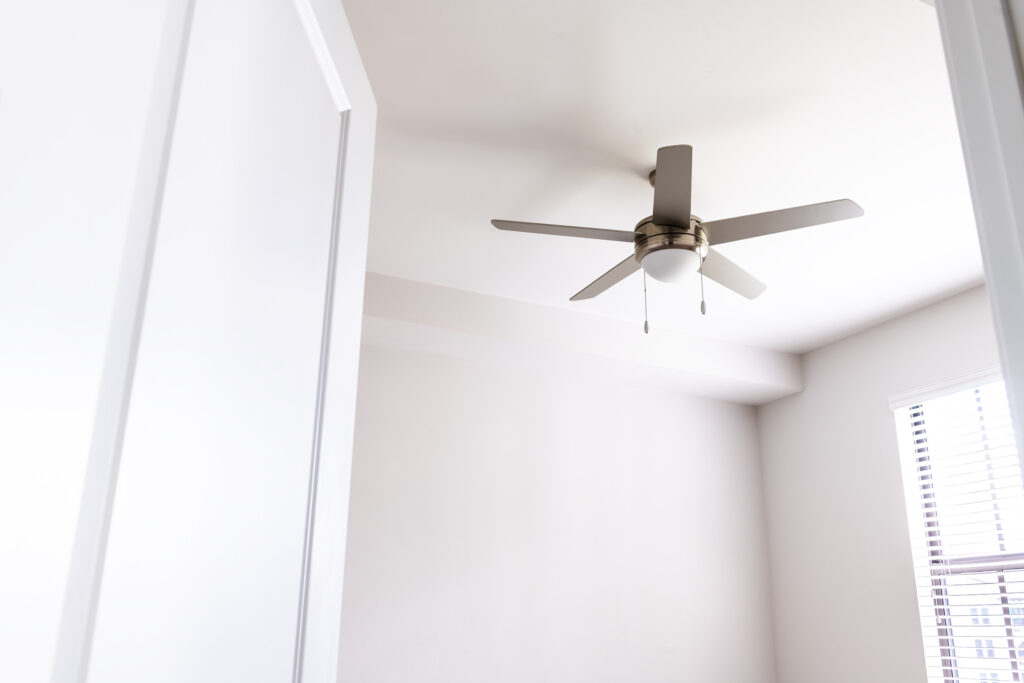
It’s a no-brainer that using your ceiling fan during the summer helps keep cool air circulating. What many don’t realize is that it’s also advantageous to run your ceiling fan during the cold months. Located on the base of your ceiling fan, there is a small switch that changes the direction of the fan’s rotors. Heat naturally rises, so by simply reversing the fan’s direction to a clockwise rotation, you redirect warm air back down and into your living space.
Check your solar wiring
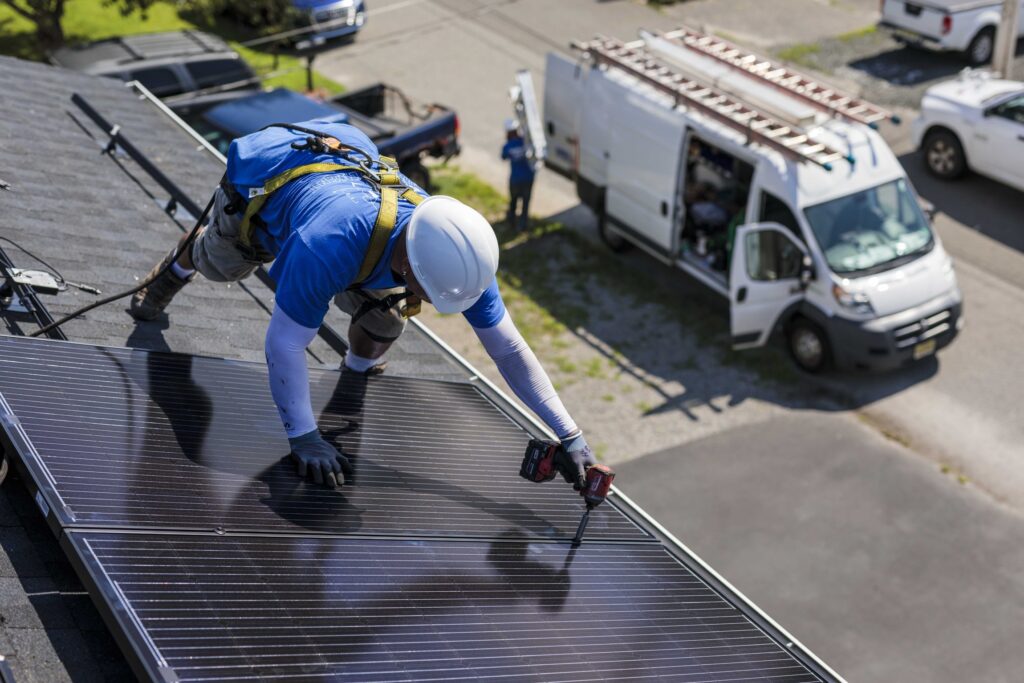
Solar is all electrical — from the wiring, to the modules, to the inverters. Excuse the pun, but when it comes to solar, you are, in a way, “playing with fire.” There are exponential gains from installing solar on a residential home, but it’s something you must check and maintain regularly. Wire at its core is a conductive material, which is why it’s wrapped in a casing, so that people can handle it safely.
When you run wiring in the elements, the same idea is applied; they must be contained within a protective housing called a conduit, which is usually made out of plastic or metal. If solar wiring isn’t done correctly, or running amok, it increases the chances of having a damaged wire turn into a live wire, thus turning into a fire.
Contact a professional
If you notice any damage or fall maintenance projects that are beyond your DIY skill level, get ahead of a busy fall season and research, vet and schedule time with professional contractors.
After reading this checklist, have you uncovered any issues on your home? If so, check out POWER’s exterior offerings.
Back to News
